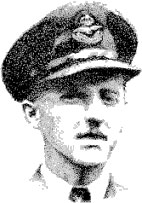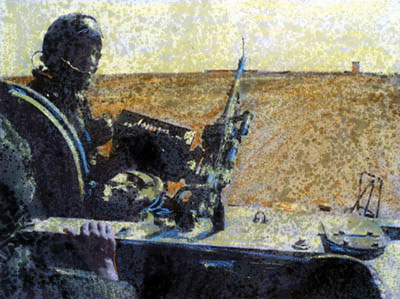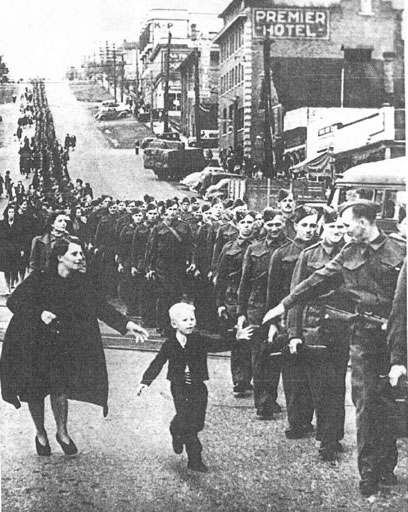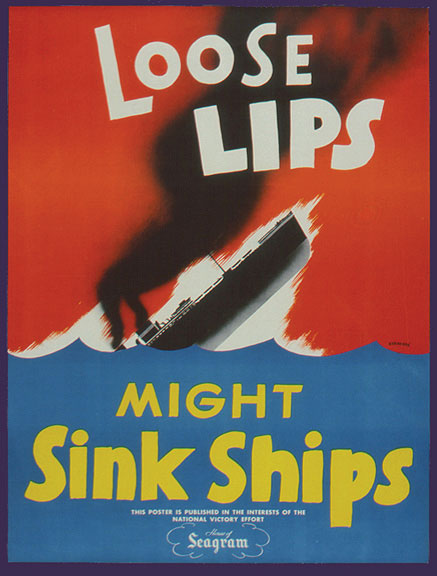Canada Remembers Times - 2008 Edition - Page 2
Second World War has Huge Impact

Composite photo: Supermarine flying boat of the RCAF Escorting Convoy, April 1941.
Frigate HMCS Swansea, January 1944.
Supermarine photo: Credit unknown.
Frigate photo: Library and Archives Canada/PA-107941
The First World War was called "the war to end all wars" but sadly, it did not. Barely 20 years after the end of the First World War, our country found itself in conflict again. The Second World War (1939-1945) truly was a world-wide conflict and Canadians served around the globe from the Arctic to Southeast Asia. More than one million Canadian men and women enlisted and more than 40,000 died protecting peace and freedom.
The war had a huge impact on Canada. In 1939 our Navy, Army and Air Force, as well as the Merchant Navy, were relatively small. However, by the end of the war, our Navy, Air Force and Merchant Navy were among the largest in the world. Many of the places where Canadians served during the war-Hong Kong, Dieppe, Ortona, Normandy, the Scheldt and the Netherlands, to name just a few-still echo in our country's consciousness more than 60 years later.
The fighting also took place closer to home. The Battle of the Atlantic brought the front lines to our doorstep as the Germans attacked Allied shipping along the East Coast. 2008 marks the 65th anniversary of this pivotal battle and Canada is honouring and thanking those who gave so much in the struggle. Without their great efforts the war could not have been won and our country might have become a very different place.
Canada's war effort on the home front led to impressive advances in science and industry and helped transform our society in many ways- from the expanded roles of women to our country's position as a new world power in technology and manufacturing. In many ways, the Second World War changed our country forever.
A Victoria Cross during the Battle of the Atlantic

Flight-Lieutenant David Hornell, VC
Photo: VAC
The Battle of the Atlantic was the longest battle of the Second World War, lasting from the war's first day to its last. It was a showdown between the Allies who were transporting desperately-needed troops and supplies from North America to Europe and the Germans who wanted to cut that supply line.
Canadians showed great courage during the Battle of the Atlantic. Flight-Lieutenant David Hornell of the Royal Canadian Air Force earned a Victoria Cross (the highest award for military valour a Canadian could earn) in 1944 for his actions while attacking a German submarine (called a U-boat). Hornell's plane was hit by anti-aircraft fire but he and his crew courageously kept up their attack and sank the enemy submarine. Hornell then had to land his damaged plane on the waves. The crew had to take turns sitting in the one undamaged lifeboat. Hornell encouraged his crew during the 21 hours it took for them to be rescued, but the crash and the ensuing exhaustion were too much and he died shortly after. His crew credited Hornell with saving their lives. When they were ready to give up he proved a selfless and caring leader.
War Art Then and Now

Italy - 1944 The Hitler Line - Charles Comfort
Source: 19710261-2203 Beaverbrook Collection of War Art © Canadian War Museum (CWM)
The extreme emotions of war are difficult to capture on paper or film, but journalists and photographers have worked hard to document Canada's efforts in conflicts over the years. During the Second World War, as had been done during the First World War, Canadian artists were also sent overseas to create works depicting the contributions of our men and women in uniform. This war art tradition has continued during Canada's efforts in Afghanistan …

Afghanistan - 2002 Armoured Fighting Vehicle on way to Tarnak Farm - Allan MacKay
Courtesy of Department of National Defence
A Long Time Far from Home

Private Jack Bernard, The British Columbia Regiment (Duke of Connaught's Own) (RCAC) saying goodbye to his wife, Bernice, and his five-year old son, Warren. New Westminster, B.C. 1940
Photo: Library and Archives Canada C-038723
Being away from home for years on end was a hard reality for many Canadians who served in the Second World War. Some men who had to leave their pregnant wives at the outbreak of the war in 1939 would not see their new sons or daughters until they returned at war's end in 1945. Imagine meeting your own child for the first time after being away from home for almost six years. That happily-expected baby would be in the first grade!
Trading Uniforms

The Boston Bruins' Bobby Bauer, Milt Schmidt and Woody Dumart.
Photo: Imperial Oil-Turofsky/Hockey Hall of Fame
Many National Hockey League players put their careers on hold during the Second World War to serve in the military. Most players, though, did not enlist as dramatically as Milt Schmidt, Woody Dumart and Bobby Bauer. The three forwards for the Boston Bruins' best line (ironically nicknamed the 'Kraut [German] Line' because of their German ancestry) hung up their skates and enlisted together in the Royal Canadian Air Force on the same day in 1942. The fans went wild!
All three saw action overseas as aircrew. Fortunately they survived the war and returned to the NHL, but not before they had given up 3 1/2 years of their hockey careers to serve the cause of peace and freedom. The teammates quickly regrouped and helped the Bruins reach the Stanley Cup finals in 1946.
Enemy Spies in Canada

Canadians were warned in war posters like this one not to talk too freely in case an enemy spy might overhear.
Image: McGill Library Collection / WP2.D5.F1
German submarines brought the war to Canada's shores during the Second World War. In 1942 and again in 1944, U-boats slipped into the Gulf of St. Lawrence and the St. Lawrence River, looking for Allied targets. Ships were torpedoed less than 300 kilometres from Québec City.
These U-boats did more than threaten our shipping. In November 1942, German spy Werner von Janowski was put ashore near New-Carlisle on Québec's Gaspé Peninsula. His unusual behaviour was quickly noticed in rural Quebec, however, and the police soon found and arrested him on a train to Montréal. In a scenario like something out of a spy movie, the German became a double agent who worked for the Allies instead.
- Date modified: